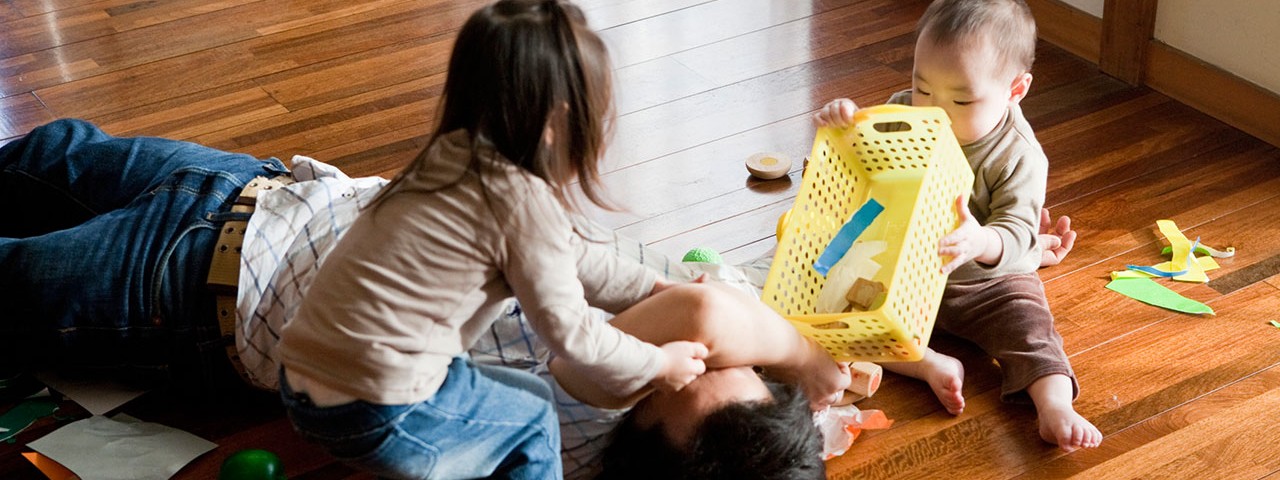Great Parents are Also Great Playmates
- Tweet

Just as parents are children’s first teachers, they are also their children’s first playmates. And both roles are inextricably connected because learning lies at the center of them both.
Great parents are also great playmates! Tweet this!Too many parents think of high-tech video games, television, computers, and recreational programs when they think of play. But what’s really important to children is that their own parents and caregivers spend time with them in unstructured play that allows children to create their own activities.
Not all researchers agree on the impact of watching television on young children, but some facts are inarguable: babies don’t learn to talk by watching television, bonding between parents and children doesn’t come from digital games, and screen time can interfere with sleep and attention and crowd out time for creative play.
Parents’ Greatest Gift: Themselves
Sigmund Freud, father of psychoanalysis, said that he could understand children by watching them play. But parents can learn even more by doing more than watching. It is in directly playing with our children that we understand them best because that’s when we are communicating, bonding, and observing how our children learn.
Sometimes, parents want their children to succeed and grow to their full potential so much that they treat every opportunity to play as an educational experience. Instead of sitting on the floor and enjoying the chance to play, parents end up directing their children, and the experience ends up tense and exasperating.
Instead, follow your child’s lead, see what interests her, celebrate her discoveries and delights and she’ll want to play with you more and more. When your child is having fun and immersed, she is learning.
Learning to Play, Playing to Learn
So, what should parents know about play during the first three years, when their child is learning critical early social and emotional skills?
In the first 12 months, babies’ tools for play are their ears, nose, eyes, mouth, and hands. They’re learning to reach and grasp objects, and by the time they’re nine months old, they understand cause and effect: I can push that button and music plays. They’re learning about the properties of objects: for example, that the ball still exists after it rolls around the corner and out of sight. By their first birthday, they will be adept communicators, using facial expressions, gestures, and perhaps even a few words.
Common play includes peek-a-boo, singing and dancing, playing with different colored balls, and pushing buttons to make toys work. Through their play, they can develop language comprehension, communication skills, and eye-hand coordination. When parents respond and participate, children also gain a sense of their own self-worth from the pleasure they give their parents.
From 12 to 24 months, toddlers take giant leaps in playing and learning. They learn to stand and walk, run and jump, play with more complex toys, and create worlds of make-believe. They learn numbers, shapes, and colors. Sharing books and games with parents builds close relationships as they discover the world together.
From 24 to 36 months, toddlers begin to play together rather than just watching each other play. Through playing with others, they learn to share and to take turns. These are the years when their imaginations go wild. Toy brooms become horses, they pretend to be kings or queens, and they engage in pretend play with others. Play promotes creativity, language ability, self-control, and problem-solving skills.
But, regardless of how old your child is, there is one fact that should never be forgotten: the most important thing about play is you, and nothing is more important to children than their parents’ undivided attention and spontaneous fun.
